Minds On
Fluids
What is a fluid? What do you already know about fluids from past experiences? What are fluids you encounter in your everyday life?
Record your ideas orally, digitally, in print, or in another method of your choice.
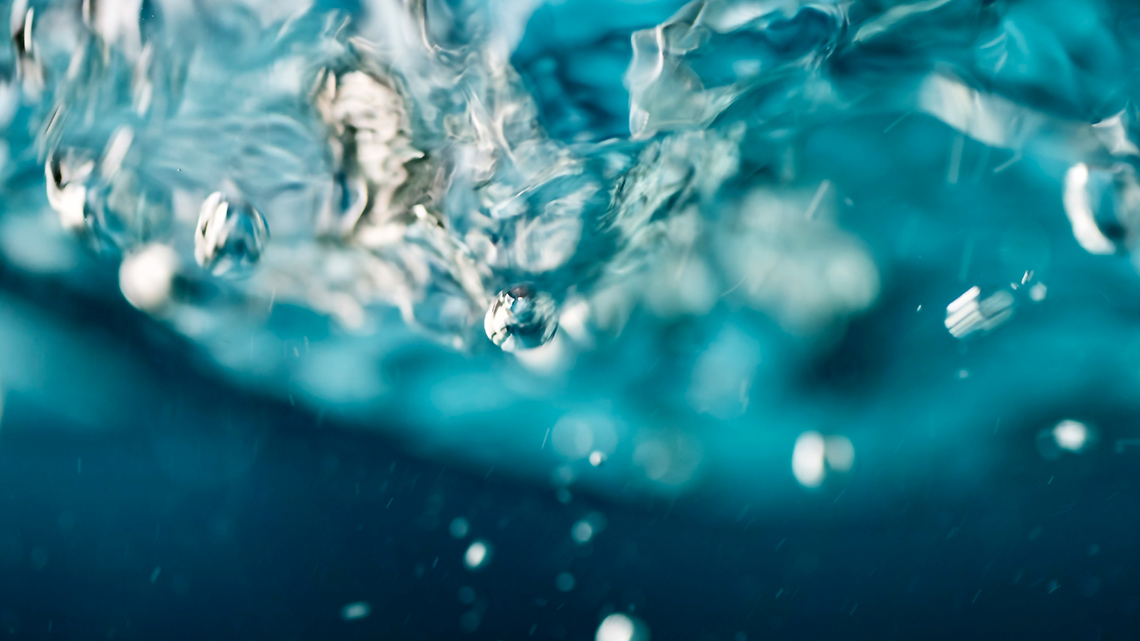
Fluids are materials that don’t have a fixed shape and flow freely. Both liquids and gases are considered fluids.
In this learning activity, you will be investigating some of the forces acting on objects in fluids, and their relationship with mass, volume, and density. Before you begin, test your current understanding by trying to match the words with their definitions.
For each term, select the corresponding definition.
Action
Buoyancy
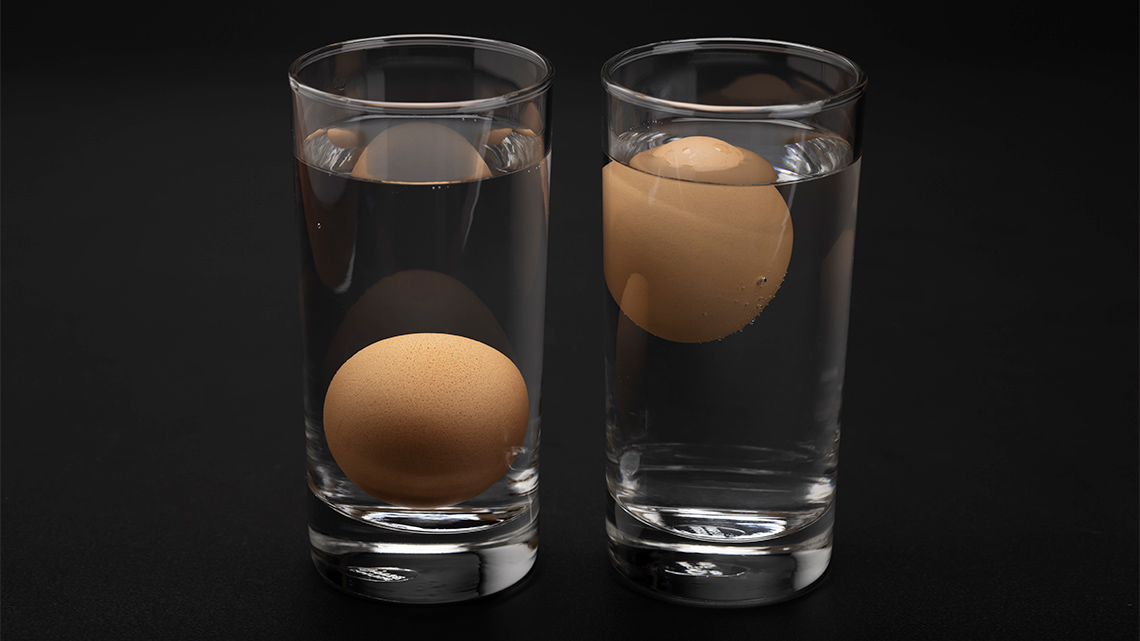
A fluid is a substance that can flow or has the ability to flow. A fluid has no fixed shape or can freely change its shape based on its container. Both liquids and gases are considered fluids.
Let’s examine some of the properties of fluids a little more closely.
Press the following tabs to access detailed explanations of mass, volume and density.
The mass of an object is a measure of how much matter makes up that object.
Mass is often confused with weight, but they are different. The mass of an object is always the same, but the weight of an object will change depending on the pull of gravity. So, on Earth and in space, your mass would be the same, but your weight would be different because the force of gravity is different.
The volume of an object is the amount of space it takes up.
An object’s density is how compact it is. In order to know how dense an object is, the volume of the object and the mass of the object both need to be known.
Density is equal to an object’s mass divided by its volume.
Pause and Reflect
Mass, volume, and density
In your own words, can you explain how mass, volume and density are all related?
Record your explanation using a method of your choice, such as in print, digitally or with an audio recording.
To sink or float?
How do we know if an object placed in a fluid will sink or float, or in other words, has buoyancy?
Explore the following video clip from Science Max: Buoyancy to learn more about how buoyancy works.
What is buoyancy
Buoyancy is the upward force that a fluid exerts on an object. For some objects, it can be enough to completely overcome the force of gravity and cause the object to float.
An object’s buoyancy depends on several different factors.
Press the following tabs to access learn about the different factors that impact buoyancy.
Recall that buoyancy is an upward force acting on an object and weight is related to the force of gravity pulling down on an object.
Depending on an object’s weight, it may or may not displace, or move, some of the fluid it was put in. The weight of the fluid displaced is equal to the upward buoyant force of that fluid.
If the weight of an object is equal to or greater than the amount fluid it displaces, then the object will float.
If the weight of an object is less than the amount fluid it displaces, then the object will sink.
The density of an object, compared to the density of the fluid it is placed in, will impact its buoyancy. Objects that are less dense than the fluid they are placed in will float, and objects that are more dense than the fluids they are placed in will sink.
Different fluids also have different densities. The denser a fluid is, the greater its buoyant force will be acting on objects placed in it.
For example: salt water is denser than fresh water. So, objects placed in salt water will likely float higher than if they were placed in fresh water because the denser salt water has a greater buoyant force.
The shape of an object impacts how much fluid it will displace. Smaller, more streamlined objects won’t displace as much fluid as objects made of the exact same amount and type of material but with a larger surface area. So, the more compact version of the object is more likely to sink lower in the fluid, and the larger surface area version is more likely to float!
Examine the following image to explore the relationship between the weight of different objects and the connection to buoyant force when placed in the same fluid.

Four large containers filled with water. In the first container, there is a cork floating at the top of the water with a red arrow above it and the word weight. There are three black arrows under the cork with the words Buoyant force and the word positive in brackets. In the second container, there is a wood log floating at the top of the water with two red arrows about it and the word weight. There are three black arrows under the log with the words buoyant force and the word positive in brackets. In the third container, there is a watermelon submersed in the water, partially floating. Above it is three red arrows with the word weight. Below it is three black arrows with the words buoyant force and the word neutral in brackets. In the fourth container there is a piece of iron at the bottom of the container. Above it is four red arrows and the word weight. Below it is three black arrows and the word buoyant force with the word negative in brackets.
Learning check!
Based on what you have learned about buoyancy, in each scenario below, try and determine if the object will float (a positive buoyant force), sink (a negative buoyant force), or hover in the fluid (a neutral buoyant force).
For each question, select the correct answer, then press “Check Answer” to see how you did.
Did You Know?
Water is a unique substance!
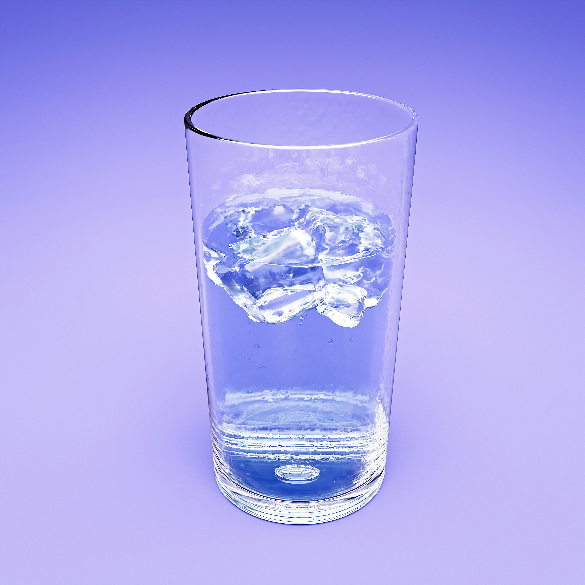
Did you know that water becomes less dense the cooler it gets? This is the opposite of most fluids that become more dense as they cool!
Water is at its densest at 4°C. As it continues to cool and begins to change state from a liquid to solid ice, the particles move farther apart from one another, and the ice becomes less dense than its liquid form. This is why ice floats in water! This occurrence is unique to water and is what causes only the surfaces of our lakes and ponds to freeze in the winter, protecting all the aquatic life below!
Buoyancy in action
Do you know what a submarine is? Do you know how it works? A submarine is a a ship that can travel at the surface or completely underwater to really deep parts of the ocean. When we think about buoyancy in action, it’s easy to think about a submarine and how it works.
Submarines are mostly filled with air, which is less dense than water, so how does buoyancy work with a submarine?
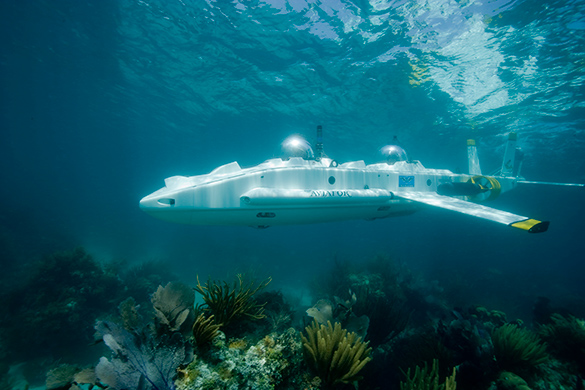
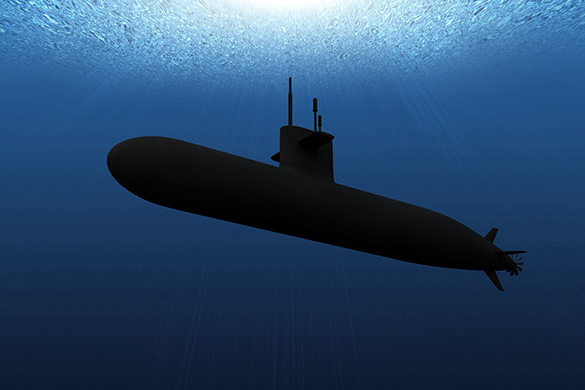
Brainstorm
Make a prediction
Based on what you’ve learned so far, make a prediction about the following question:
How do you think submarines change their position underwater?
Record your ideas using a method of your choice, such as in print, digitally or with an audio recording. If possible, discuss your ideas with someone else.
How do submarines dive?
A submarine dives (or changes its position in the water) using the principles of buoyancy.
Submarines have a built-in compartment, called a ballast tank, that can change the ratio of pressurized air to water in them to adjust its position in the water.
Examine the following animation of a ballast tank in action:
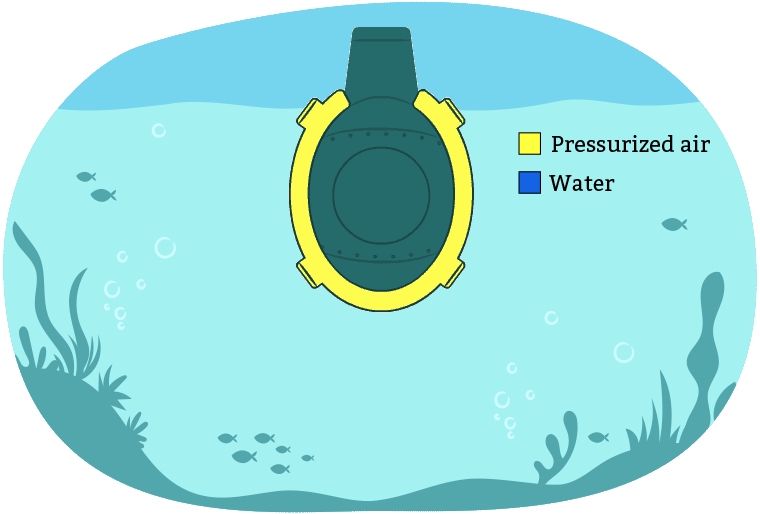
A diagram of a submarine in water. Around the perimeter of the submarine is a ballast tank that can contain different ratios of water to pressurized air, allowing the submarine to sink or float. As the pressurized air in the ballast tank increases and the volume of water decreases, the submarine floats higher in the water. As the pressurized air decreases and the volume of water increases, it sinks, Pressurized air in the ballast tank is indicated with a yellow colour and water is denoted with a blue colour. There is a legend indicating this.
Given the large surface area of a submarine and the fact that the vessel is hollow for humans to be able to travel in it, submarines contain a lot of air. Air is less dense than water, so the submarine will naturally float higher in the water. To overcome this, and for the submarine to dive lower in the water, it must become more dense than water it is in.
To become more dense, the ballast tank of the submarine takes in water and lets out air to sink lower down. When the submarine needs to float higher, the ballast tank releases water and replaces it with pressurized air to make it less dense and therefore float higher.
By changing the amount of water and pressurized air in the ballast tank, submarines can adjust their density, which allows them to adjust their buoyancy to sink or float.
Did You Know?
Nature’s ballast tank

Did you know that fish have a similar type of chamber to ballast tanks called a swim bladder? The swim bladder is what allows fish to adjust their position in the water as they swim. The swim bladder is like a balloon that inflates and deflates using dissolved oxygen from the water, allowing the fish to sink deeper or rise higher.
Think about it!
What did you learn about buoyancy from the example of a submarine or of a fish's swim bladder?
Record your thinking using a method of your choice, such as in print, digitally, or using an audio recording.
Let’s investigate buoyancy!
Continue your investigation on understanding the principles of buoyancy by examining the following two videos.
Answer the following questions using a method of your choice.
- What have you learned about buoyancy so far?
- In a brief paragraph, explain what buoyancy is and how it applies to one of the examples shown in the video.
- Can you think of any other examples of buoyancy?
Task: playing with buoyancy!
You are tasked with designing a toy that uses the principles of buoyancy to float, sink, or hover in water.
Before you begin and to help guide you with your task, check out this video to learn about the steps of the Engineering Design Process.
To help organize your ideas and design process, you may choose to complete the Design a Buoyancy Toy organizer in your notebook or using the following fillable and printable document. If you would like, you can use speech-to-text or audio recording tools to record your thoughts.
Pause and Reflect
Reflecting on your work
How did your experiment or design help you understand buoyancy and the principles of density, mass, and volume of fluids?
What type of water was your toy placed in? If you changed to a different type of water (saltwater, fresh water, etc.) would your toy still be able to float? Why or why not?
Record your answer in a method of your choice, such as in print, digitally, or with an audio recording.
The future of buoyancy
So, how can the principles of buoyancy be applied now and in the future?
An Ontario company has been testing the use of an underwater compressed-air energy storage system. In this system, air is pumped into underwater balloons.
When the energy is needed, the air is released from the balloons and then expanded to create electricity. This is considered the world’s first underwater energy storage.
This idea has been around for years. When the supply of energy is more than the demand, the excess energy is used to run an air compressor and store this air in a balloon that is underwater. When the power is needed, a valve is opened and the compressed air travels from the balloon and runs a turbine which generates electricity.

There is a model of a farm and silo at the left end of a large rectangular modelled piece of land. 75% of this land is underwater. There are three sets of 4 underwater balloons attached to tubes that extend from each set of balloons to the farm.
Answer the following question in a method of your choice.
Do you think that this source of energy would be considered renewable (able to replenish itself) or non-renewable (not able to replenish itself)? Why?
Consolidation
Check your understanding
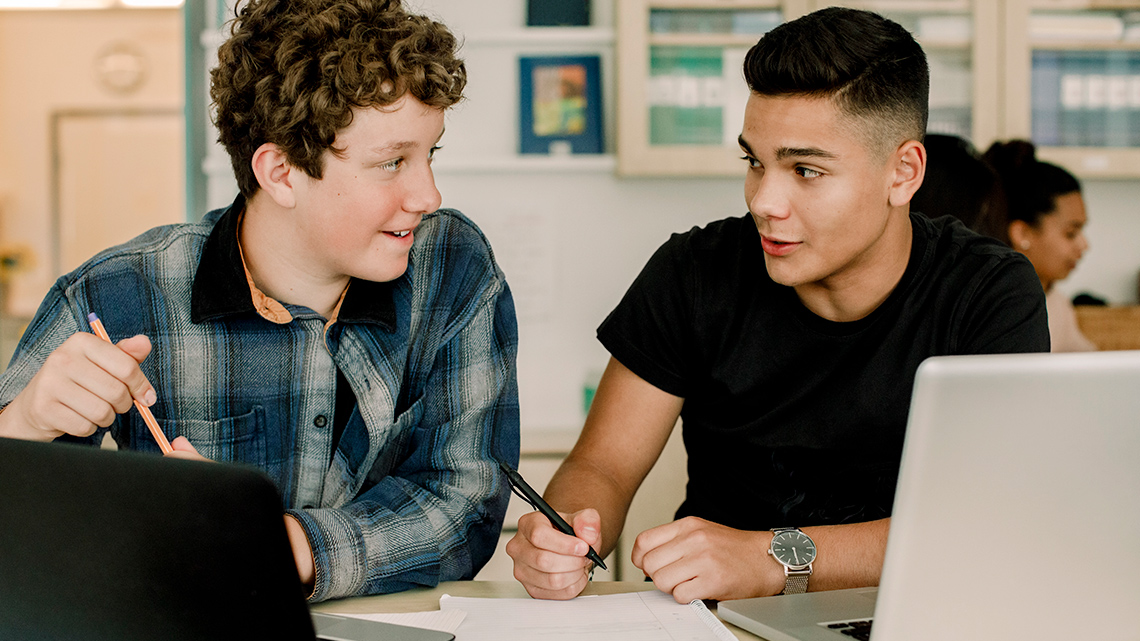
Check your understanding of buoyancy by completing the interactive fill-in-the-blanks activity.
For each sentence, select the missing word from the drop-down menu.
Student Success
Share your understanding
Using a method of your choice, explain the concept of buoyancy using a submarine, or your designed toy as an example.
Be sure to include other scientific vocabulary, such as mass and density. If helpful, include an image or diagram with your explanation.
Consider recording your ideas in a notebook, using a digital format, or with an audio recording.
Reflection
As you read the following descriptions, select the one that best describes your current understanding of the learning in this activity. Press the corresponding button once you have made your choice.
I feel…
Now, expand on your ideas by recording your thoughts using a voice recorder, speech-to-text, or writing tool.
When you review your notes on this learning activity later, reflect on whether you would select a different description based on your further review of the material in this learning activity.
